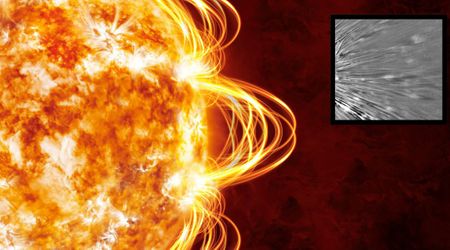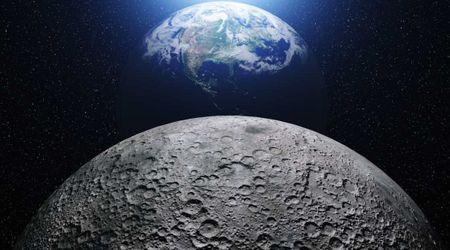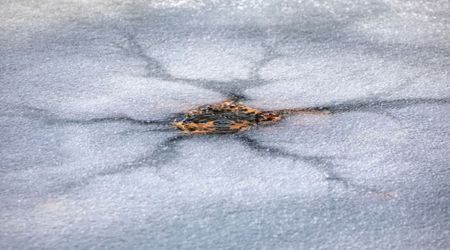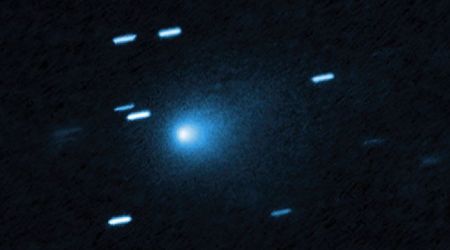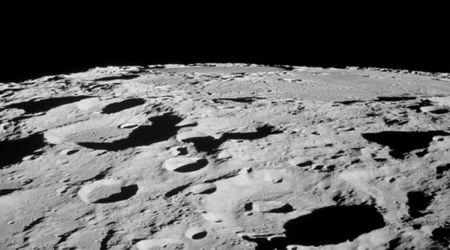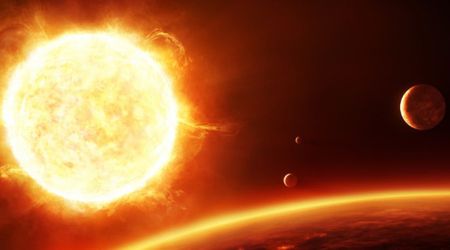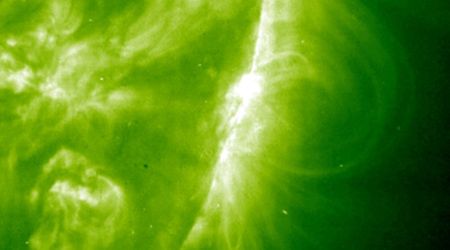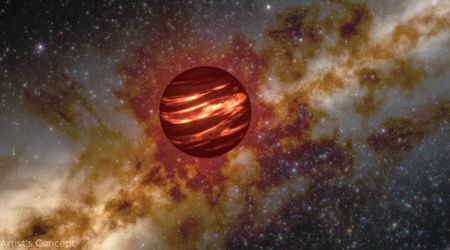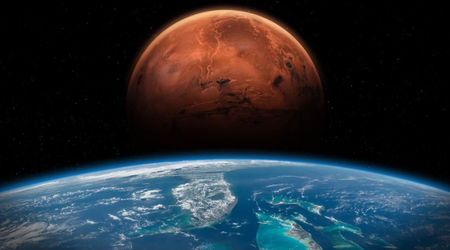Which planet has the most moon?


Moons are like tiny planets, and some planets have dozens of moons. For a long time, many people assumed that Jupiter had the most moons as it is the biggest planet in our solar system. However, recent discoveries have dethroned Jupiter as the moon king.
While Jupiter has 80 confirmed moons, it appears that Saturn has 83. However, even this isn't set in stone, and things might change in the future once again.

Saturn and Jupiter regularly "one-up" each other when it comes to their total moon count.
Why Does Saturn Have The Most Moons?
For a long time, the moons of Jupiter received much attention, especially due to the Galilean Moons and the fact that some of them, such as Europa, have water underneath their surface. However, as of late, Saturn's moons have stolen the spotlight, at least when it comes to numbers.
Saturn has long been observed due to its beautiful rings, but who could have guessed that this planet had a whooping 83 satellites? Possibly even more. When we take into consideration that our planet has just one moon, Mars has two, and Venus or Mercury, the closest planet to the Sun, has none at all, it doesn't seem fair.
Gas giants always seem to dominate regarding the number of moons they have. Neptune, the farthest planet in the solar system, has 14 moons, Uranus has 27 moons, Jupiter is at 80, and Saturn has 83.
The reason why gas giants have more moons than terrestrial planets is possibly due to their size. The larger a planet is the more powerful its gravitational pull. This means that gas planets can steal moons from other planets, and they also can hold larger volumes of mass around them.
Stars can also do this. Some scientists believe that if Mercury had a moon, the Sun would just take it away due to its powerful gravitational field. When it comes to Saturn, what makes its number of moons very difficult to pinpoint accurately is its giant rings.
Saturn's Rings and the Hidden Moons
Moons come in various shapes and sizes. For example, Saturn's biggest moon is Titan, which is more significant than even the planet Mercury and the second largest moon in our solar system after Jupiter's moon Ganymede. At the same time, Saturn's smallest moon is Anthe, which has a mere 900 meters / 2,952 feet in diameter. In comparison, Earth's moon has 3,478 kilometers / 2,161 miles in diameter.
Saturn's giant rings are mostly made up of leftover asteroids, comets, and shattered moons, which consist of particles that range in size from a couple of micrometers to meters. Because of this, if there are any other moons, they are difficult to observe, especially if they are little.
Not to mention that having 83 other moons orbiting around Saturn can also make further observations of possible moons difficult. However, this hasn't stopped scientists from trying! What we do know is that Saturn's rings hide plenty of moonlets, also referred to as minor moons.

Many of the newly discovered Saturnian moons were located within the gas giant's rings.
Saturn's Ring Moonlets
Most of Saturn's rings contain moonlets, or ring moonlets, which are small satellites or minor moons. For example, one of the smallest moonlets discovered in Saturn's B Ring is estimated to have just 300 meters in diameter.
Most of Saturn's moonlets are very tiny, ranging between 40 to 500 meters in diameter, which makes their observation or detection very difficult among the debris. In the A Ring alone, there are over 150 estimated moonlets.
Saturn vs Jupiter Moons
Jupiter should have more moons than Saturn based on its size alone. Jupiter is slightly bigger than Saturn by approximately 16.71%. However, the reason why Saturn has more moons than Jupiter is because of its past history.
Saturn's moons might have collided more often with each other resulting in smaller moons. In fact, some scientists believe that the rings around Saturn are simply remnants of old moons. It is unclear whether or not Saturn is in a better position to have moons than Jupiter.
On the one hand, Jupiter is closer to the asteroid belt, which means it might have captured some celestial objects from there and transformed them into its satellites. On the other hand, Saturn is farther away from the asteroid belt and other planets than Jupiter, which gives it free rein over rogue celestial objects floating in our solar system, or perhaps even foreign ones.
What is clear is that both planets have the strongest gravitational fields in our solar system, with the exception of the Sun. Apart from this, comets and other celestial objects from the Oort Cloud might have been captured by their gravitational fields. In some instances, collisions between existing moons and comets, asteroids, and other large celestial objects might have resulted in the creation of many moons and moonlets.
Another reason why Saturn might have more moons than Jupiter is due to the orbit of its largest moons. The biggest moons of Saturn are Titan, Rhea, Hyperion, and Iapetus. Perhaps the gravitational fields of these moons are slightly more favorable than Jupiter's moons due to their orbit.
This means that Saturn's moons and its rings might have attracted smaller moons into their family, locking them into their gravitational field. Although Jupiter also has its rings, they are much fainter and less powerful than Saturn's rings. When it comes to Jupiter's Moons they orbit much closer around the planet than Saturn's moon.
The farthest moon of Jupiter is Callisto, which orbits Jupiter at a distance of 1.8 million km / 1.1 million mi. The farthest moon of Saturn is Iapetus, which orbits Saturn at a distance of 3.5 million km / 2.1 million mi. Although there are other moons that orbit these planets even farther away, they are much smaller, and thus, their gravitational fields aren't as powerful.
Saturn, the King of the Moons
There are many factors why Saturn has many more moons than Jupiter. It all boils down to its position, past collision history, its rings, and the gravitational playground of its farthest moons, attracting even more celestial objects into the fold.
Although there is a possibility that Jupiter has a couple of more moons that aren't yet discovered, it still doesn't matter in the long run if we take into account Saturn's moonlets and other possibly hidden moons.
